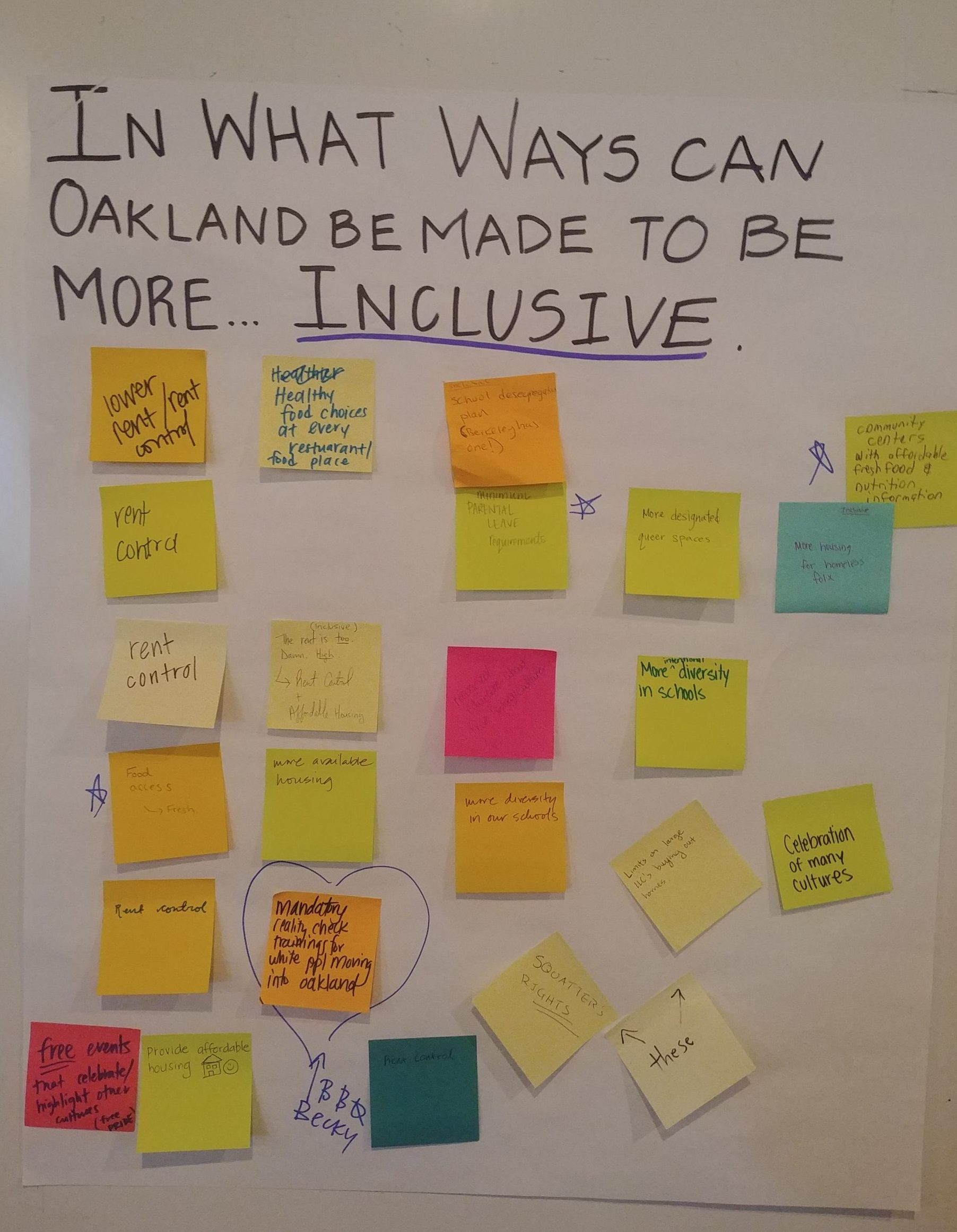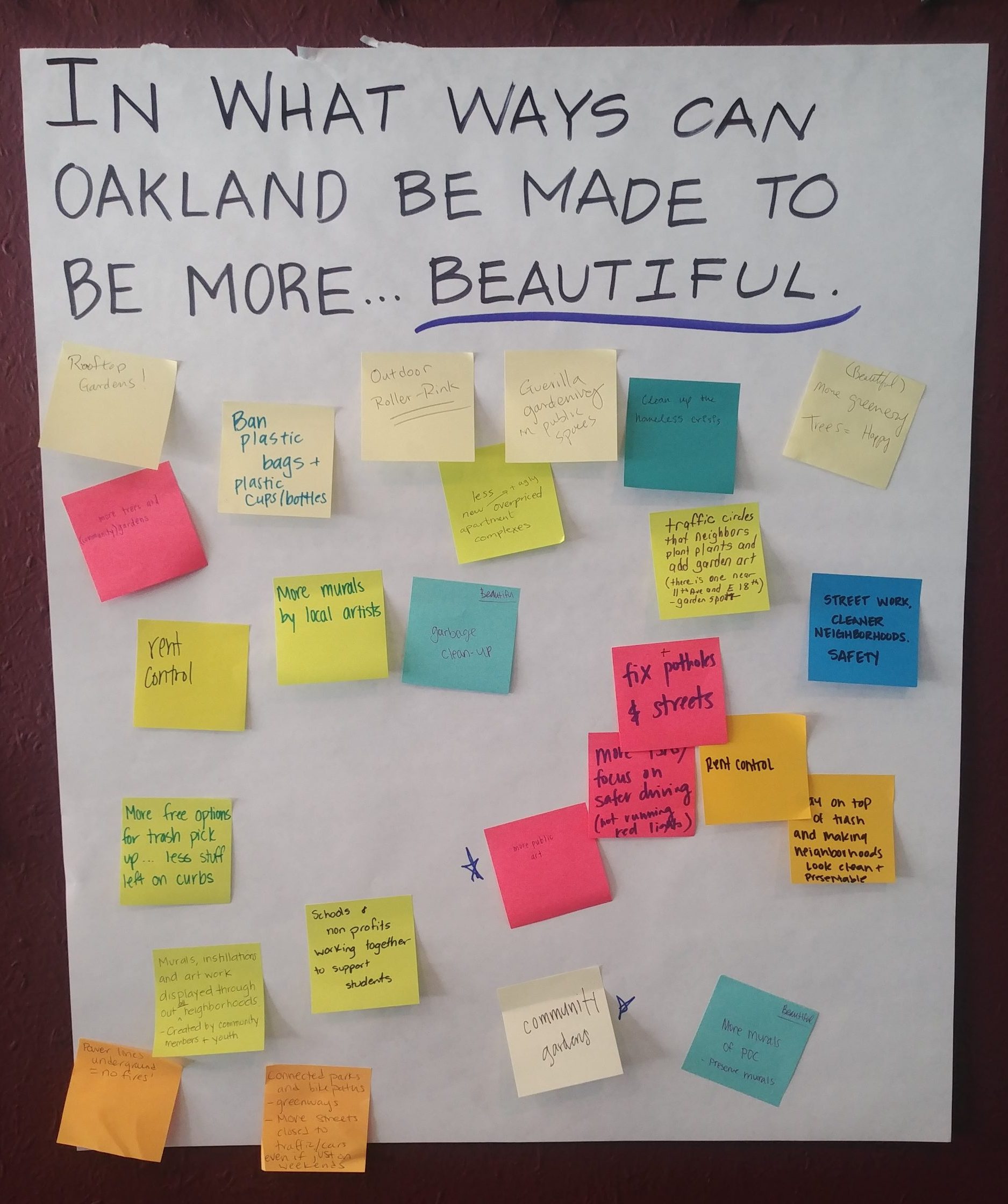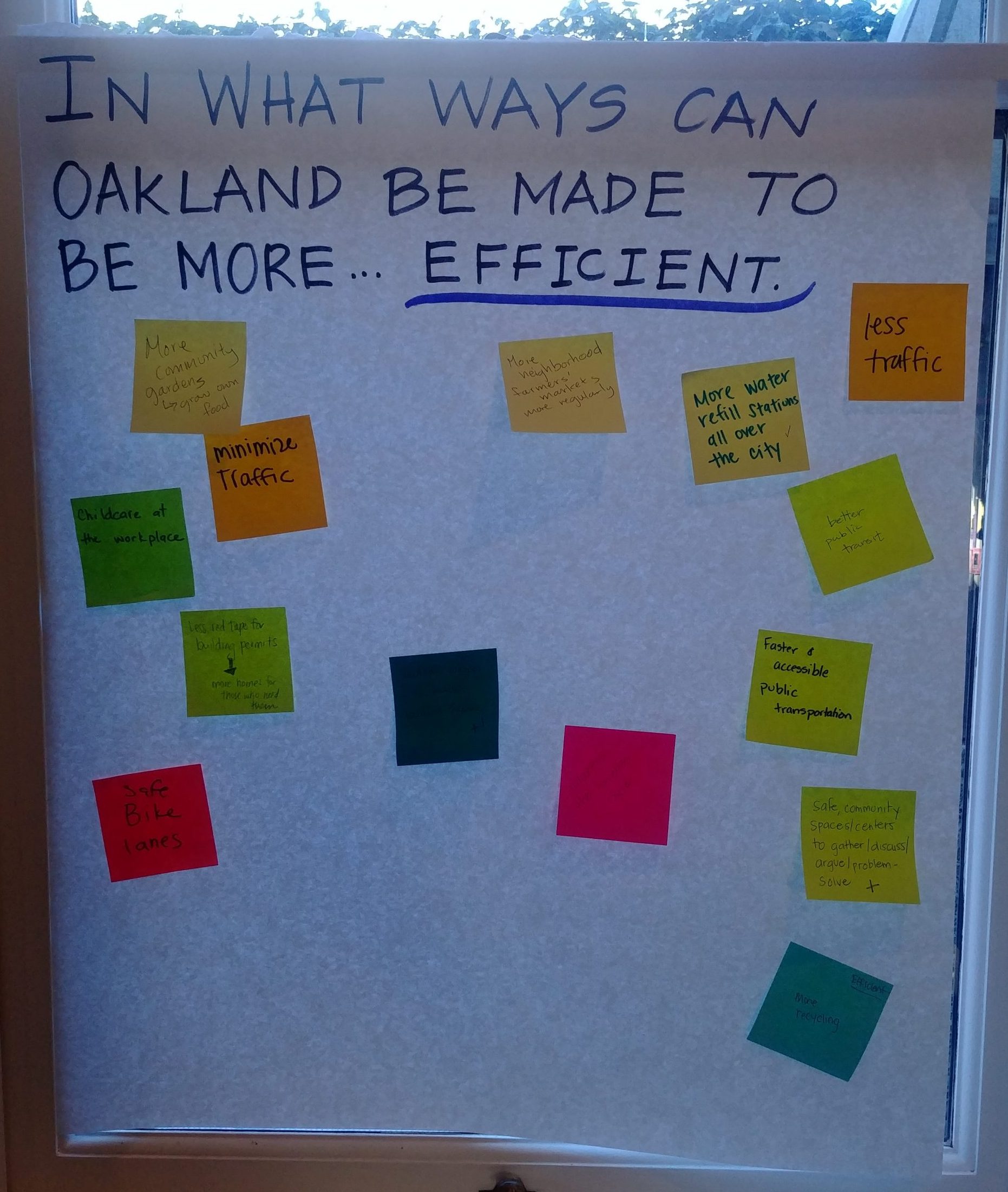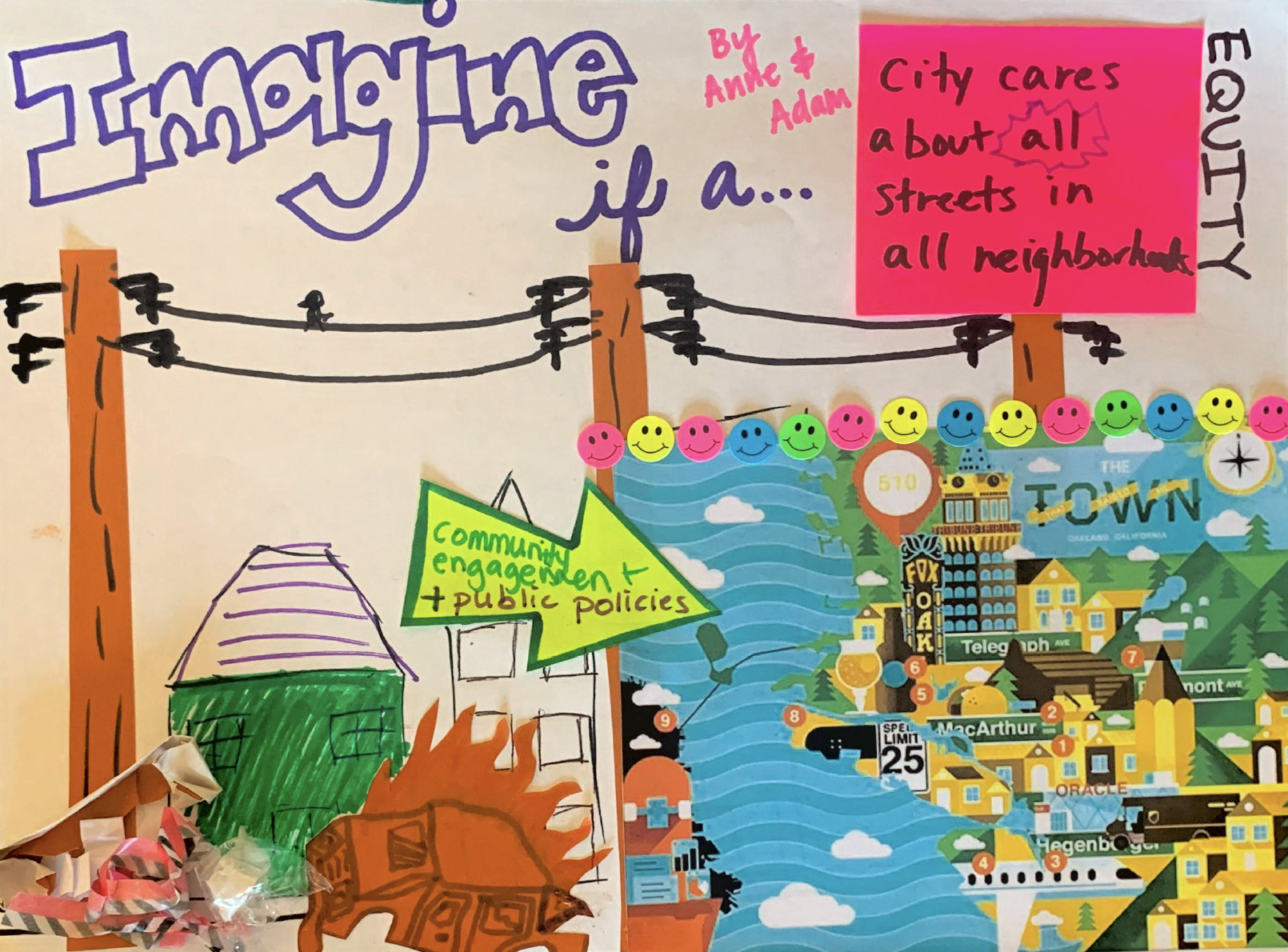At Maker Ed, we believe that in order to have an impact across the country it is important to also partner with educators locally. One of our local connections is with Achieve Academy, a TK-6 public charter school in Oakland, CA. Over the course of five months, we will facilitate four workshops for Achieve educators based on our Approaches to Maker Education.
At our second workshop, we engaged in a Tinkering to Discover lesson focused on imagining change we would like to see in the community in which the school is located, Oakland. This lesson integrated zine-making, social justice themes, and English Language Arts content based on expressed educator need and interest from feedback at our first workshop.
 Tinkering to Discover is one of our Approaches to Maker Education and is intentionally structured to put learners in the driver’s seat. We use this approach to develop initial understanding of content or skills through tinkering and making. It creates a space for multiple pathways to make meaning out of learner’s in-class and life experiences while building understanding through hands on exploration. (Read more about Tinkering to Discover here).
Tinkering to Discover is one of our Approaches to Maker Education and is intentionally structured to put learners in the driver’s seat. We use this approach to develop initial understanding of content or skills through tinkering and making. It creates a space for multiple pathways to make meaning out of learner’s in-class and life experiences while building understanding through hands on exploration. (Read more about Tinkering to Discover here).
We started out by using a thinking routine called Imagine If… by Agency by Design. This thinking routine is designed to encourage divergent thinking by allowing learners to think of new possibilities for an object or a system through different lenses and then converge their thinking around the topic by exploring possibilities of improving, tinkering, or redesigning that object or system.
We decided on these four lenses to reimagine our communities in Oakland:
Consider the parts, purposes, and people who interact with your object or system, and then ask:
-
In what ways could Oakland be made to be more… Inclusive
-
In what ways could Oakland be made to be more… Liberating
-
In what ways could Oakland be made to be more… Beautiful
-
In what ways could Oakland be made to be more… Efficient
Educators collectively and publicly posted their initial ideas according to these lenses as they reflected on their own lives, their friends’ and families’ lives, and their community as a whole.

Examples: more affordable housing, free mental health services, childcare at workplace, higher teacher wages, less policing of people of color

Examples: fresh food access, more designated queer spaces, free events that celebrate/highlight other cultures, minimum parental leave requirements


Once they had an opportunity to discover and discuss the relevant issues that arose through this initial stage, pairs of educators then chose one of the topics to explore by creating a zine page illustrating their thoughts.
We chose zines as the media of making because zines have historically been a part of social justice activism – they provide an avenue for historically unheard voices to be heard. They also provide an opportunity for our learners to be producers of knowledge and take the means of production into their own hands, so that learners feel empowered to be creators of media themselves.
There are also many ways to make a zine. They can be created by writing, cutting, gluing, or drawing text, images, collage, photos, quotes, poems, or short stories. The possibilities are open-ended and infinite.
As educators designed their zine pages, they focused on discussing how to visually represent the topics that were important to them. Through this hands-on making, they explored their thoughts and ideas more deeply with their partner in order to make their thinking visible to those around them.




By allowing learners to create zines after initially brainstorming topics through the Imagine If… thinking routine, we provide safe opportunities for learners to discuss social, political, or environmental issues important to them. This process supports learners to make meaning out of their ideas through creative and critical thinking.
To wrap up the experience, we collected all of these inspiring zine pages as a record of our thinking through this process. You can view these here: Achieve Academy Imagine Oakland Zine.
As a learning experience, we would place this Tinkering to Discover activity as an introduction to a learning progression, as an initial assessment of where learners are as a classroom community in their understanding and experiences of the identified system. This creates the context to choose focal areas for small groups or for the whole group of learners to study more deeply. Once the learning community has developed their understanding of the system, they would use what they have learned to move a solution forward and document their thinking in a second volume of their zine.
Resources in this Blog Post
Interested in learning more about incorporating maker centered learning in your classroom, library, museum, after school program, or makerspace? Explore our workshop offerings!
Also check out these online resources:
- Thinking Routines from Agency by Design, an ongoing research initiative at Project Zero investigating the promises, practices, and pedagogies of maker-centered learning experiences.
- Maker Ed’s Building a Maker-Centered Pathway to Invention: A free, self-paced online learning model that integrates invention, entrepreneurship, and making
